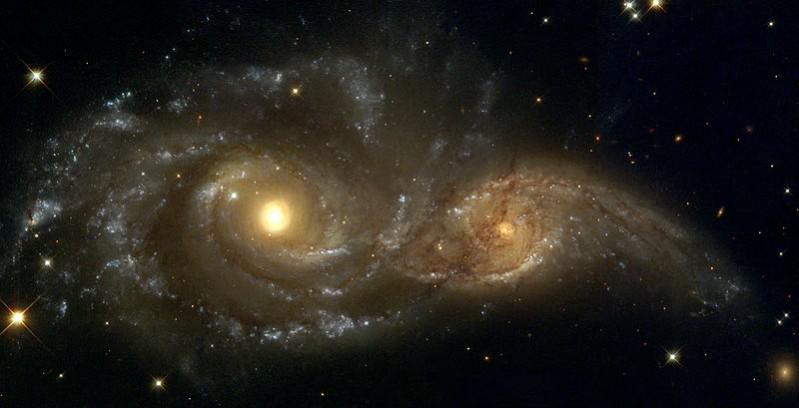
Researchers at the University of Michigan have recently found out the long-lost sibling of our galaxy, Milky Way and unfortunately, it's long extinct. The university's Department of Astronomy's Richard D'Souza and Eric Bell have gotten to know about the history of our galaxy's closest galactic neighbor, the Andromeda galaxy.
As per the recent findings, Andromeda had gobbled up a massive galaxy around two billion years ago and left a nebula, as a residue. According to the researchers, although it's pretty much ragged, it's still "a rich trail of evidence." They believe this would help the experts to comprehend and learn about how disk galaxies, such as our very own Milky Way, develop, grow and sustain.
"Astronomers have been studying the Local Group [of galaxies]—the Milky Way, Andromeda, and their companions—for so long. It was shocking to realize that the Milky Way had a large sibling, and we never knew about it," stated Bell.
Reportedly, this shredded galaxy, named M32, used to be astronomical, at least, 20 times larger than the ones that have united with the Milky Way. This means M32 is the third largest galaxy in the Local Group.
Just to note, the so-called Local Group includes over 54 galaxies, most of which are dwarf ones. Scientists believe that within 1 billion and 1 trillion years from now, these galaxies will bump into each other and create one single galaxy. The gravitational center of it is situated somewhere between the Milky Way and the Andromeda Galaxy.
"M32 is a weirdo. While it looks like a compact example of an old, elliptical galaxy, it actually has lots of young stars. It's one of the most compact galaxies in the universe. There isn't another galaxy like it," Bell said.
The researcher-duo made use of some new and advanced computer simulations and reached the conclusion that most of the stars located across the faint outer halo of Andromeda were actually given birth to via the shredding of a large nebula. Their study has been published in the journal Nature Astronomy.
As D'Souza put it, "It was a 'eureka' moment. We realized we could use this information … to infer the properties of the largest of these shredded galaxies."
The scientists believe that this study will mark a new beginning in understanding the stars and the galaxies.
"The Andromeda Galaxy, with a spectacular burst of star formation, would have looked so different two billion years ago. When I was at graduate school, I was told that understanding how the Andromeda Galaxy and its satellite galaxy M32 formed would go a long way toward unraveling the mysteries of galaxy formation," added Bell.

















